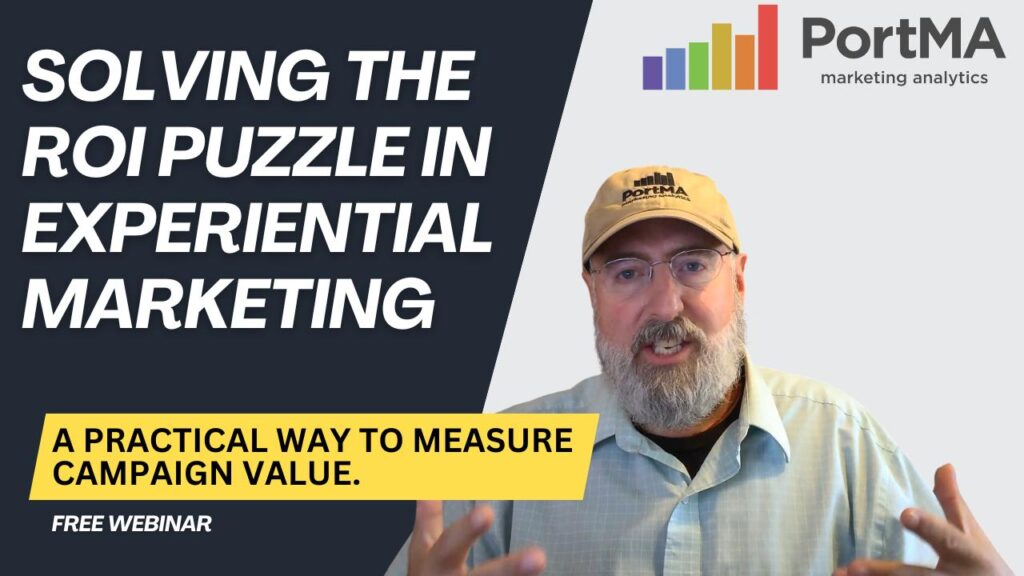
For many professionals, presentations are a routine part of the job, whether it’s delivering a client recap, pitching a new idea, or presenting at a conference. This is especially true when communicating insights from Experiential Marketing data, where clarity and confidence can make or break the message.
Yet too often, the focus falls entirely on the content of the slides, overlooking the fact that how you present is just as important as what you present.
Strong presentation skills do more than share information.
They build credibility, inspire action, and position you as a leader worth listening to.
Improving in this area is one of the most direct ways to strengthen client relationships and drive measurable business outcomes.
Here are four strategies to help elevate your next presentation.

Download Your Free Sample Report & Benchmark Your Sponsorship ROI
See how top brands measure sponsorship success. This sample report gives you a sneak peek into industry benchmarks, helping you optimize your sponsorship strategy and justify budgets with data.
Estimated reading time: 1 minute
Table of Contents
- Download Your Free Sample Report & Benchmark Your Sponsorship ROI
- 1. Structure Your Story Clearly
- 2. Make Your Experiential Marketing Data Meaningful
- 3. Focus on Your Delivery
- 4. End with a Clear Call-to-Action
- Conclusion
- Want to learn more about exploring the RIV Paradigm through the Three Core Questions of Experiential Marketing?
- Additional Reading
1. Structure Your Story Clearly
Presentations without structure can leave audiences confused or disengaged.
A simple narrative arc makes your message more impactful.
A useful framework is:
- Define the problem.
- Explain the approach.
- Show the results.
- Clarify the next steps.
This ensures your audience knows where you are going and why it matters.
2. Make Your Experiential Marketing Data Meaningful
Data can be persuasive, but it’s only effective when it’s remembered.
Simply sharing percentages or figures risks losing engagement if people don’t see the context.
Instead, tie data to real-world implications.
For example:
- Replace “engagement rose 15%” with “engagement rose 15%, which meant 300 more people interacted with our brand compared to last year.”
- Pair numbers with visuals such as charts or graphs to reinforce the message.
When audiences can connect metrics to outcomes, they are more likely to retain and act on what you’ve presented.
3. Focus on Your Delivery
Even the best slides won’t matter if your delivery doesn’t land.
Confidence, pacing, and tone are what keep people engaged.
To improve delivery, prioritize:
- Practicing out loud to refine pacing and flow.
- Using pauses to emphasize key points.
- Monitor for filler words or monotone delivery by recording yourself.
Effective delivery positions you as credible and confident, while keeping attention firmly on your message.
4. End with a Clear Call-to-Action
The way you conclude is just as important as how you begin.
Ending without direction creates ambiguity and reduces impact.
Instead, always finish with a clear call-to-action.
Examples include:
- Scheduling a follow-up meeting.
- Approving the next phase of a plan.
- Confirming budget alignment.
By ending with clarity, you ensure that the energy from your presentation translates into measurable outcomes.
Conclusion
Presentations are opportunities to do more than inform; they are moments to influence decisions, secure buy-in, and build stronger relationships.
By:
- Structuring your message with a clear story arc.
- Making your data meaningful.
- Delivering with confidence and…
- Closing with a decisive call-to-action.
You can transform ordinary presentations into business drivers.
Investing in these skills not only improves how you’re perceived but also directly impacts your ability to achieve results.
If you’re ready to improve your presentation process, contact us for a walkthrough on how we can help you create presentations that drive measurable business outcomes.
Want to learn more about exploring the RIV Paradigm through the Three Core Questions of Experiential Marketing?
On August 27, 2025, Christopher Clegg, President of PortMA, hosted a LinkedIn Live webinar that delved into this framework. You can now watch the recorded session here.
Connect with Chris directly on LinkedIn to stay updated on the webinar and engage with more valuable content on experiential marketing measurement and ROI optimization.

